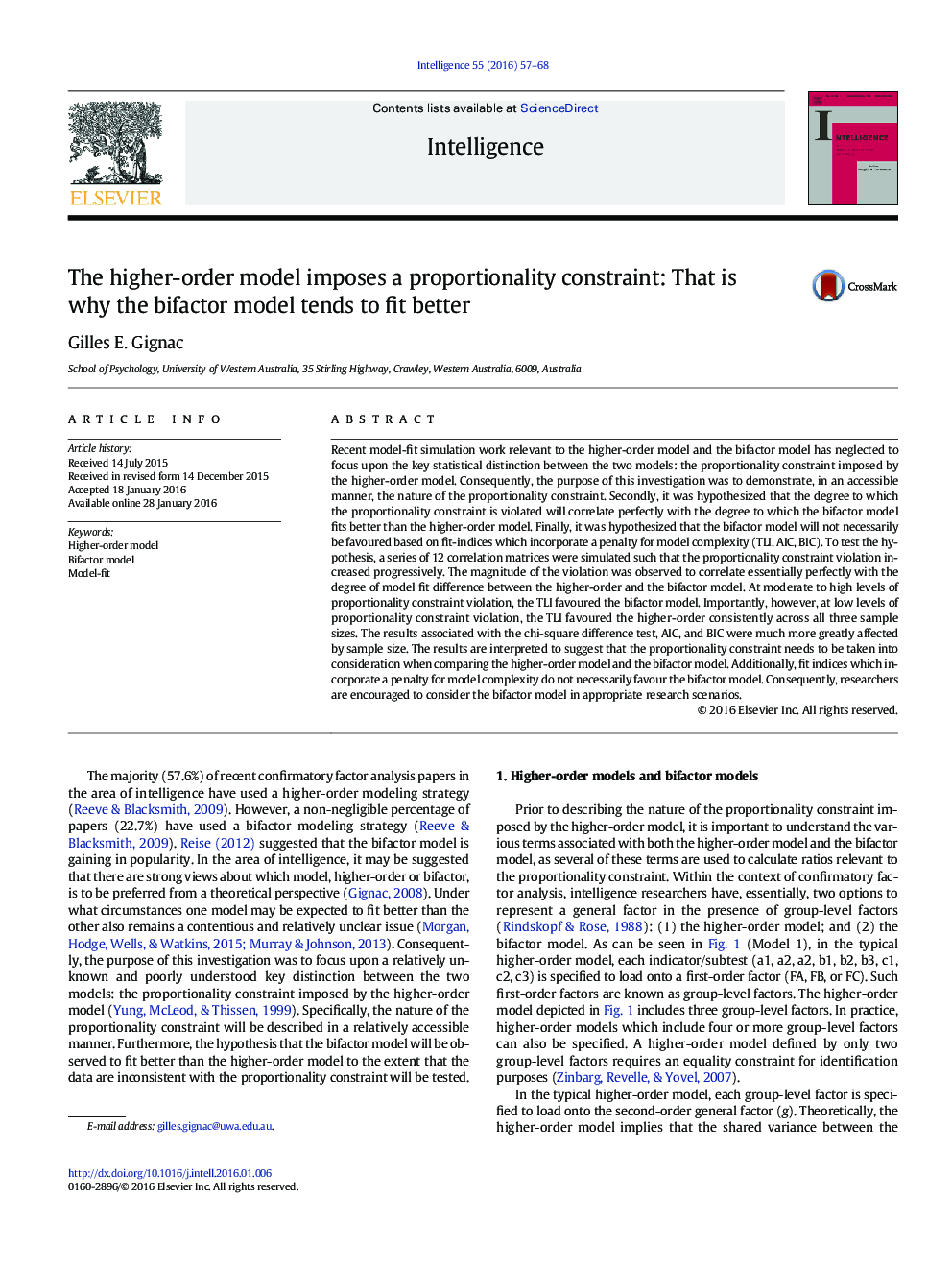| کد مقاله | کد نشریه | سال انتشار | مقاله انگلیسی | نسخه تمام متن |
|---|---|---|---|---|
| 7293381 | 1474261 | 2016 | 12 صفحه PDF | دانلود رایگان |
عنوان انگلیسی مقاله ISI
The higher-order model imposes a proportionality constraint: That is why the bifactor model tends to fit better
دانلود مقاله + سفارش ترجمه
دانلود مقاله ISI انگلیسی
رایگان برای ایرانیان
موضوعات مرتبط
علوم انسانی و اجتماعی
روانشناسی
روانشناسی تجربی و شناختی
پیش نمایش صفحه اول مقاله

چکیده انگلیسی
Recent model-fit simulation work relevant to the higher-order model and the bifactor model has neglected to focus upon the key statistical distinction between the two models: the proportionality constraint imposed by the higher-order model. Consequently, the purpose of this investigation was to demonstrate, in an accessible manner, the nature of the proportionality constraint. Secondly, it was hypothesized that the degree to which the proportionality constraint is violated will correlate perfectly with the degree to which the bifactor model fits better than the higher-order model. Finally, it was hypothesized that the bifactor model will not necessarily be favoured based on fit-indices which incorporate a penalty for model complexity (TLI, AIC, BIC). To test the hypothesis, a series of 12 correlation matrices were simulated such that the proportionality constraint violation increased progressively. The magnitude of the violation was observed to correlate essentially perfectly with the degree of model fit difference between the higher-order and the bifactor model. At moderate to high levels of proportionality constraint violation, the TLI favoured the bifactor model. Importantly, however, at low levels of proportionality constraint violation, the TLI favoured the higher-order consistently across all three sample sizes. The results associated with the chi-square difference test, AIC, and BIC were much more greatly affected by sample size. The results are interpreted to suggest that the proportionality constraint needs to be taken into consideration when comparing the higher-order model and the bifactor model. Additionally, fit indices which incorporate a penalty for model complexity do not necessarily favour the bifactor model. Consequently, researchers are encouraged to consider the bifactor model in appropriate research scenarios.
ناشر
Database: Elsevier - ScienceDirect (ساینس دایرکت)
Journal: Intelligence - Volume 55, MarchâApril 2016, Pages 57-68
Journal: Intelligence - Volume 55, MarchâApril 2016, Pages 57-68
نویسندگان
Gilles E. Gignac,